Seafood Shio Ramen has become very popular in Japan. This type of ramen has been made in Sapporo for years, and is now being served around the world. It is a delicious and simple dish that’s easy to eat. Despite the fact that it is made from chicken broth, it is also a delicious addition to any ramen soup. If you’re looking for something with a little more kick, consider trying this ramen with shrimp and vegetables. It is a great way to get a taste of Japanese culture.
Seafood Shio Ramen Recipes
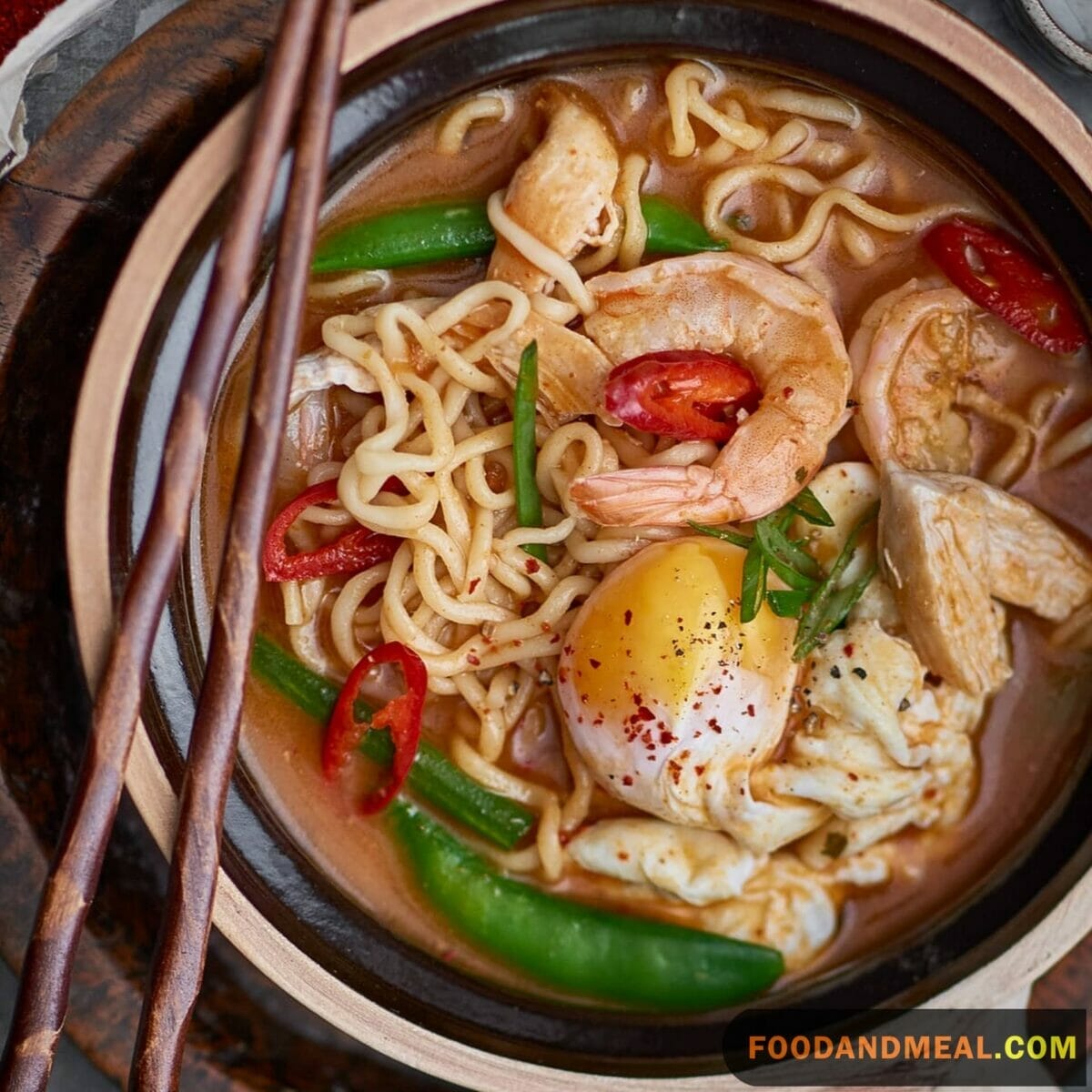
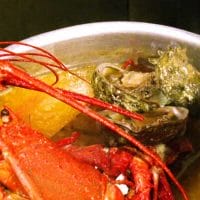
Seafood Shio Ramen
Ingredients
- Vegetable oil for frying
- 12 to 16 large scallops
- ½ cup Shio Tare
- 5 cups any type clear soup
- 1⅓ pounds noodles fresh, such as Chukasuimen
- 4 tablespoons shrimp oil
- 4 Salted Eggs halved
- Negi
Instructions
- Heat a bit of vegetable oil in a large skillet over medium heat. Lightly sauté the scallops on both sides until just cooked through. Set aside.
- With all your ingredients ready to go, bring a large pot of water to a boil over medium-high heat.
- Heat your ramen bowls by filling them halfway with hot water. The bowls don’t need to be scalding, but they should be hot to the touch. Dump out the hot water and dry the bowls with some paper towels or a clean towel.
- Put the tare and soup in a medium saucepan. Mix and bring to a simmer over low heat.
- Cook the noodles in the large pot of boiling water. Ramen that has been cut to a standard thickness (about 1 mm) will cook in 1 to 2 minutes.
- Put 1 tablespoon of shrimp oil in each ramen bowl.
- About 30 seconds before the noodles are finished cooking, ladle the soup into the ramen bowls.
- Drain the noodles, taking care to shake off as much excess water as you can. Carefully place some noodles in each bowl of soup, keeping them tidy.
- Place 3 or 4 scallops, a salted egg, and a sprinkle of negi neatly on the ramen. Serve immediately.
Video
Notes
- In Japan, this ramen would include the orange gonads of the scallop as well as the abductor muscle, which is the part we eat in the West. The orange parts taste like a cross between liver and caviar.
- Soup: Mix equal parts unseasoned low-sodium chicken broth and dashi broth. Japanese dashi powder to make broth can be found in the Asian foods section of many supermarkets or in Asian grocery stores or online. You could also use a clear seafood broth.
- Noodles: Use 3 ounces of dried ramen noodles per bowl, preferably the thin, straight style.
Nutrition
© Food And Meal
This website provides approximate nutrition information for convenience and as a courtesy only. Nutrition data is gathered primarily from the Spoonacular Database, whenever available, or otherwise other online calculators.
Alternative Method: Making Seafood Shio Ramen with a Pressure Cooker
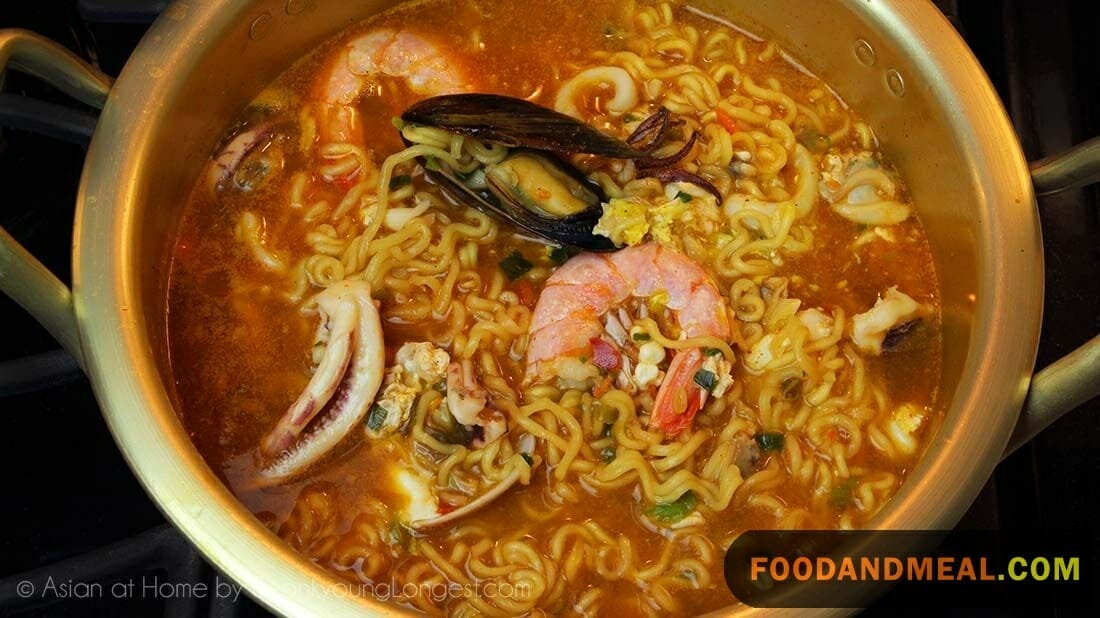
Ingredients:
- 1 pound of mixed seafood (shrimp, mussels, squid, and your choice of fish)
- 8 cups of water
- 2 cups of chicken or seafood broth
- 1 leek, chopped
- 4 cloves of garlic, minced
- 1 piece of kombu (dried seaweed)
- 2 tablespoons of shio (sea salt)
- 1 tablespoon of sesame oil
- 1 tablespoon of soy sauce
- 8 oz of ramen noodles
- 2 soft-boiled eggs
- 1/4 cup of sliced green onions
- Nori seaweed sheets, for garnish
- Red pepper flakes, for a spicy kick (optional)
Instructions:
- Start by preparing your seafood. Clean and devein the shrimp, scrub the mussels, and slice the squid and fish into bite-sized pieces.
- In your pressure cooker, add the water, chicken or seafood broth, leek, minced garlic, kombu, and shio (sea salt). Close the lid and set the cooker to high pressure. Cook for 5 minutes.
- While the broth is cooking, heat the sesame oil in a separate pan. Sauté the mixed seafood for about 2-3 minutes until they turn opaque. Set the cooked seafood aside.
- When the pressure cooking is complete, release the pressure, and carefully remove the lid.
- Add soy sauce to the broth and taste it to adjust the saltiness if needed. The shio (sea salt) should provide a rich umami flavor, but feel free to add more to your taste.
- Cook the ramen noodles according to the package instructions. Drain them and set aside.
- To serve, place a portion of cooked ramen noodles into a bowl. Ladle the hot broth over the noodles, making sure to include some leeks and kombu for added flavor.
- Arrange the sautéed seafood, soft-boiled eggs, sliced green onions, and a sheet of Nori seaweed on top of the noodles.
- If you like your ramen with a spicy kick, sprinkle some red pepper flakes over the dish.
- Serve your Pressure Cooker Seafood Shio Ramen piping hot and enjoy the delightful fusion of flavors brought together effortlessly with the magic of pressure cooking.
Tips for making Seafood Shio Ramen
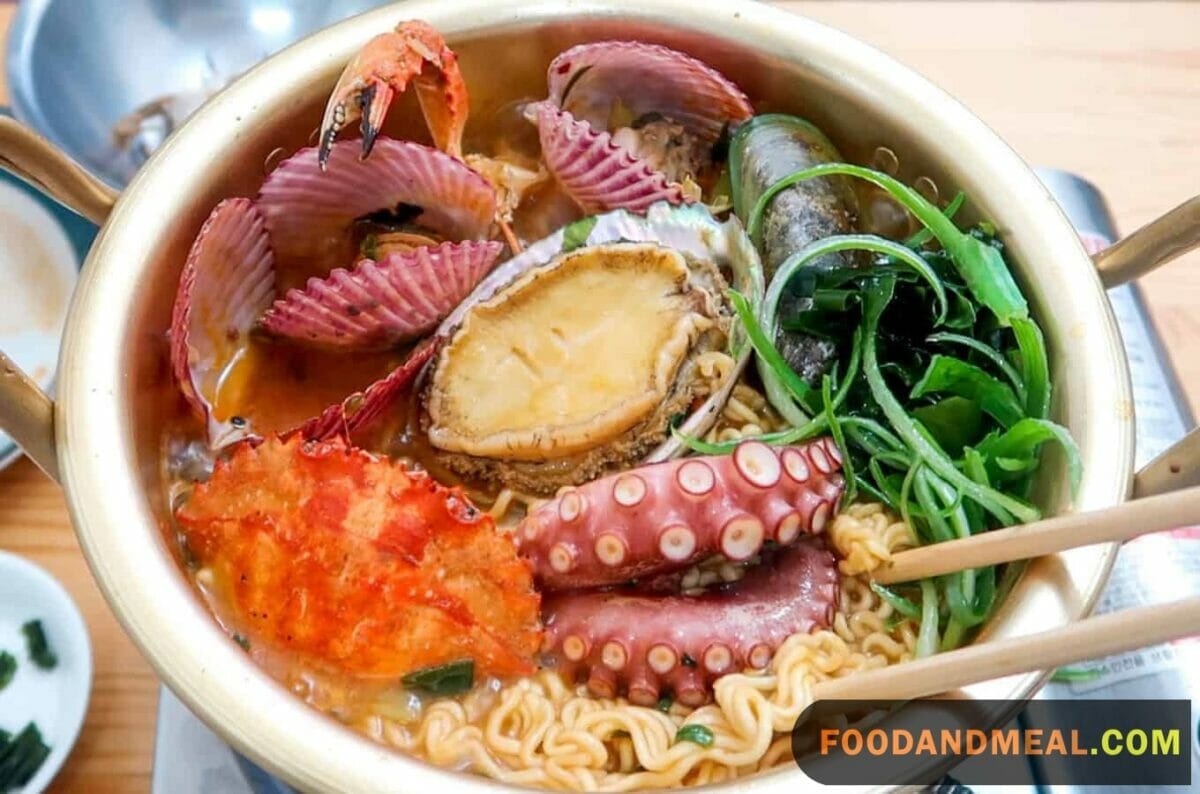
Cooking Tips
- Tip 1: Perfecting the Broth – To achieve the best results, be patient with your broth. Simmer it gently without letting it boil vigorously. The slow infusion of flavors is what makes your Seafood Shio Ramen truly exceptional.
- Tip 2: Timing is Everything – Don’t overcook the seafood. The pressure cooker method reduces cooking time, so be vigilant. The seafood should be tender, not rubbery. Follow the recommended times for each type of seafood.
- Tip 3: Experiment with Seafood – Feel free to mix and match seafood to your preference. Try scallops, clams, or even lobster if you’re feeling indulgent. The more variety, the more complex and delicious the flavor profile.
- Common Mistake to Avoid: Adding too much salt upfront. Remember, you can always add more salt later. It’s easier to adjust the seasoning as you go than to try and save an overly salty broth.
Serving Suggestions
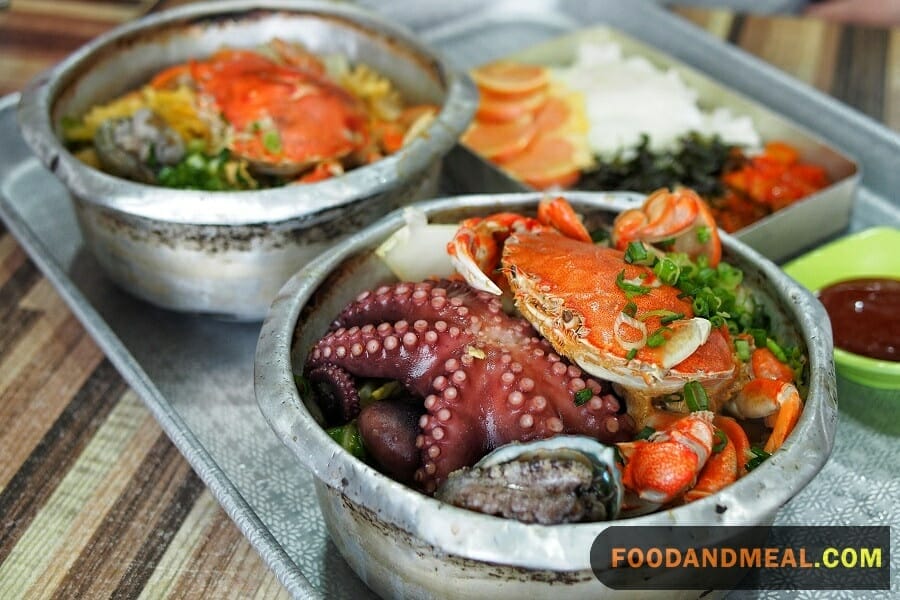
- Ramen Companions: Seafood Shio Ramen pairs beautifully with a side of pickled ginger and soy-marinated bamboo shoots. These add a delightful contrast to the rich flavors of the ramen.
- Garnish Galore: Get creative with your garnishes. A sprinkle of sesame seeds, a drizzle of chili oil, or a handful of fresh bean sprouts can add both flavor and visual appeal to your dish.
- Beverage Bliss: Complement the umami depth of your Seafood Shio Ramen with a light, crisp Japanese lager or a chilled glass of sake. Alternatively, a warm cup of green tea can cleanse the palate between bites.
- Different Servings: While a classic bowl of ramen is the go-to presentation, consider serving Seafood Shio Ramen in a large, shallow bowl for a more contemporary look. You can also serve it in smaller portions as an appetizer at a dinner party.
- Leftovers Makeovers: Turn leftover Seafood Shio Ramen into a sensational stir-fry. Heat some oil in a pan, add the ramen, and stir-fry with your favorite vegetables and protein. A quick and delicious meal in minutes.
FAQs about Seafood Shio Ramen
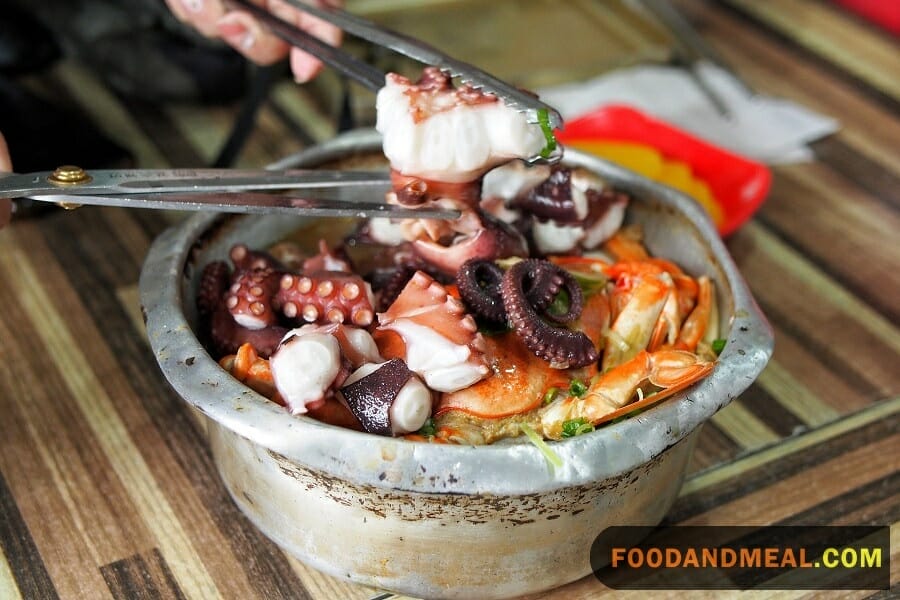
- Can I store leftover Seafood Shio Ramen? Absolutely! Store the leftover ramen and broth separately. Seal them in airtight containers, and they can be refrigerated for up to 2-3 days. Reheat the broth gently to avoid overcooking the seafood.
- Can I freeze Seafood Shio Ramen? While it’s possible, it’s not recommended due to the seafood’s texture changes when frozen and reheated. It’s best enjoyed fresh.
- Can I use pre-cooked seafood for this recipe? You can, but it’s not ideal. The seafood won’t absorb the flavors of the broth as well as raw seafood. Fresh is best for the most authentic taste.
- Can I make this dish with store-bought ramen noodles? While homemade noodles are fantastic, store-bought ramen noodles work just fine for convenience. Look for the fresh or dried ramen noodles in your local grocery store.
- What other seafood combinations can I use? Get creative! Combos like shrimp and scallops, or mussels and crab can be delightful. Just ensure they have similar cooking times to avoid overcooking or undercooking.
Create Seafood Shio Ramen with expert guidance. Share the recipe, and subscribe for more culinary delights on our blog.
I'm James F Anderson, a noted sous chef from London and a Le Cordon Bleu alumnus. My career began in a Michelin-starred Parisian eatery, where my blend of classic and contemporary cooking, using seasonal ingredients, earned accolades. Recognized in culinary publications and on cooking shows, I’m committed to mentoring aspiring chefs and delivering memorable dining experiences, marking me as a standout talent in the culinary world.





